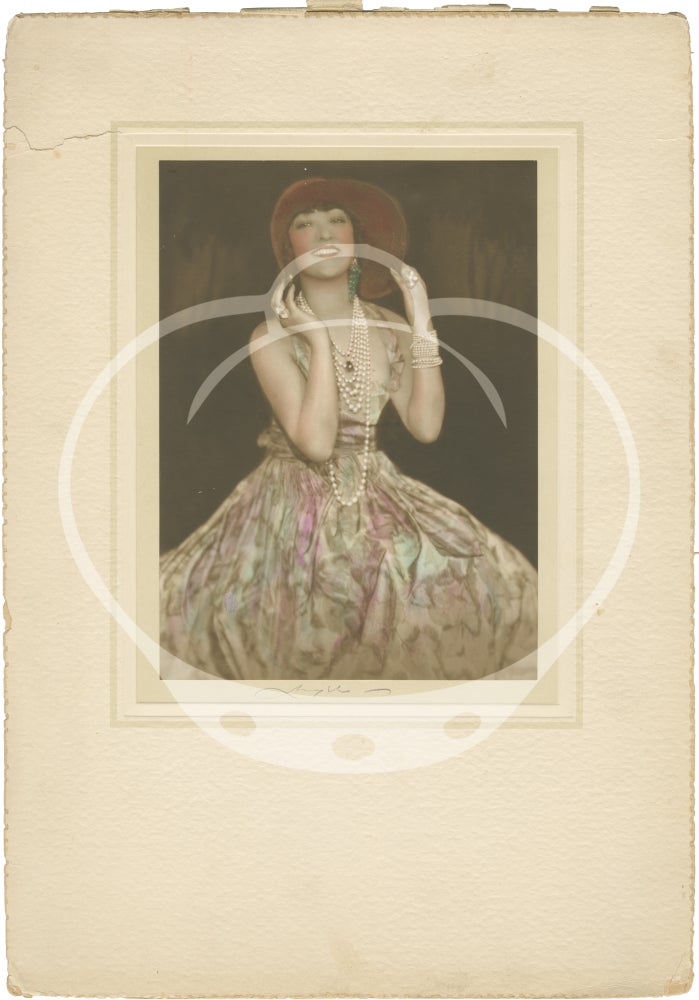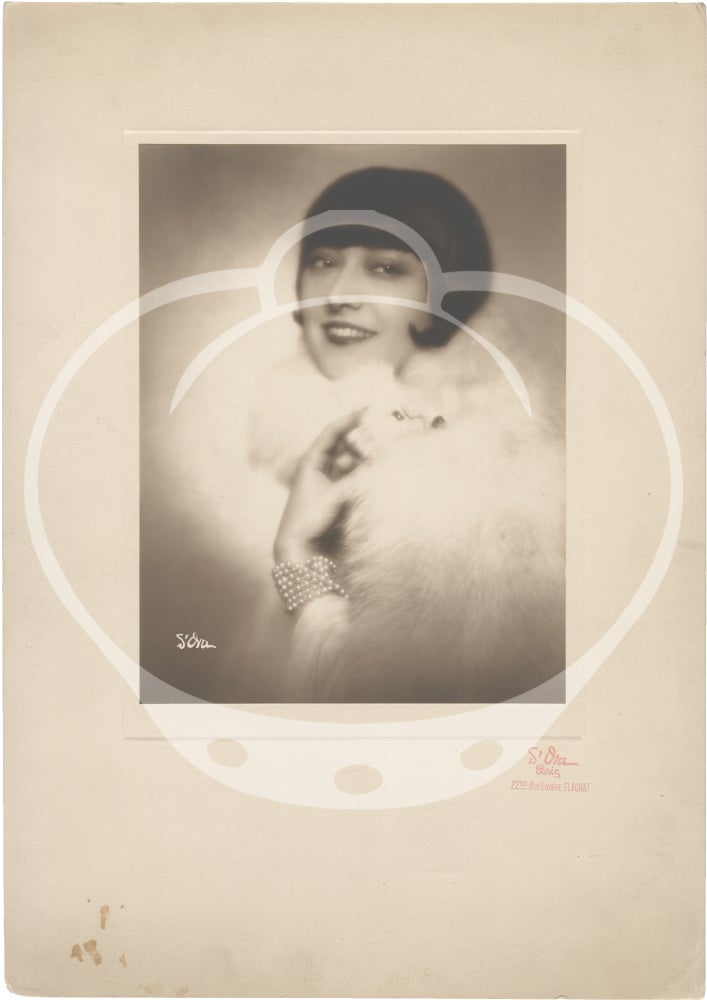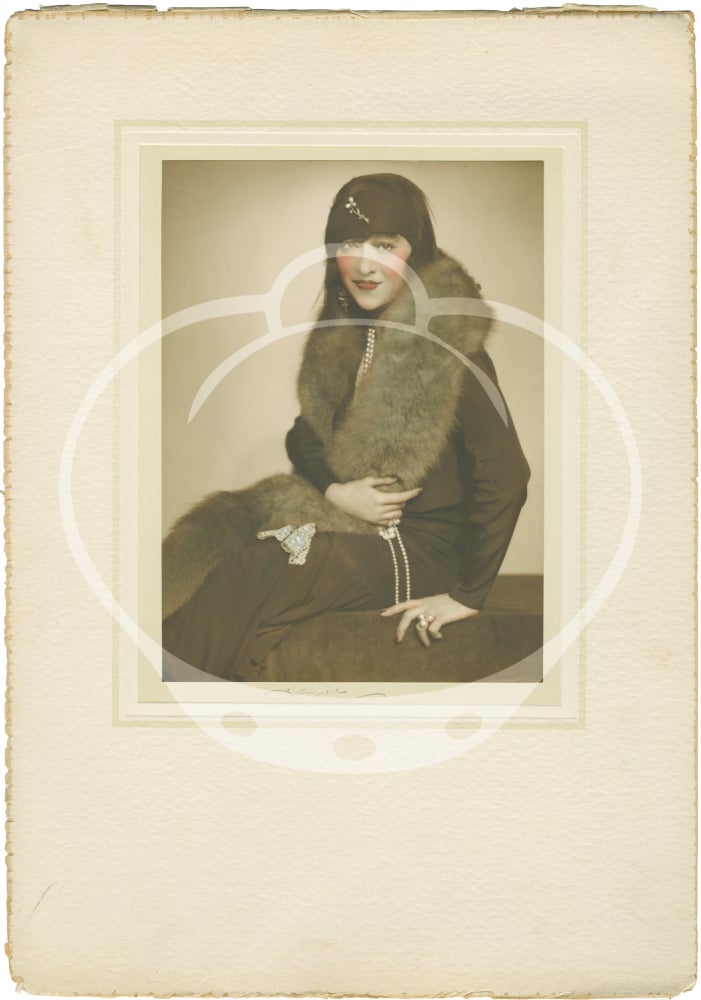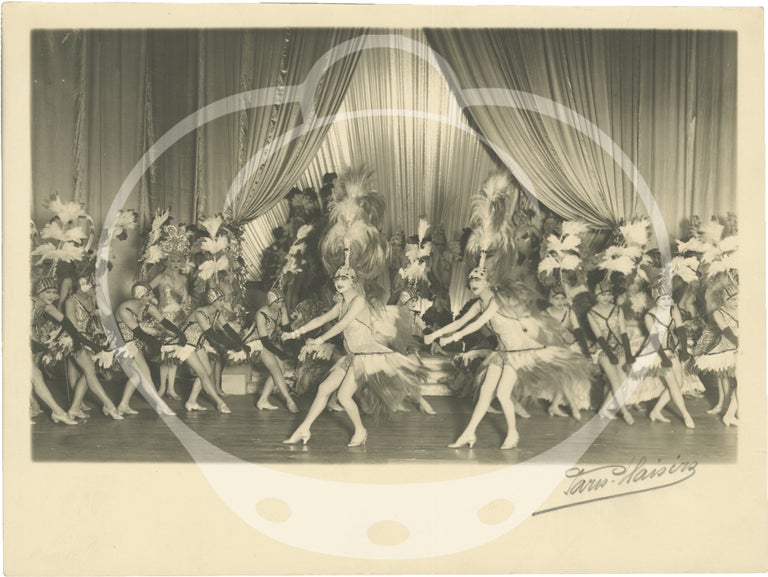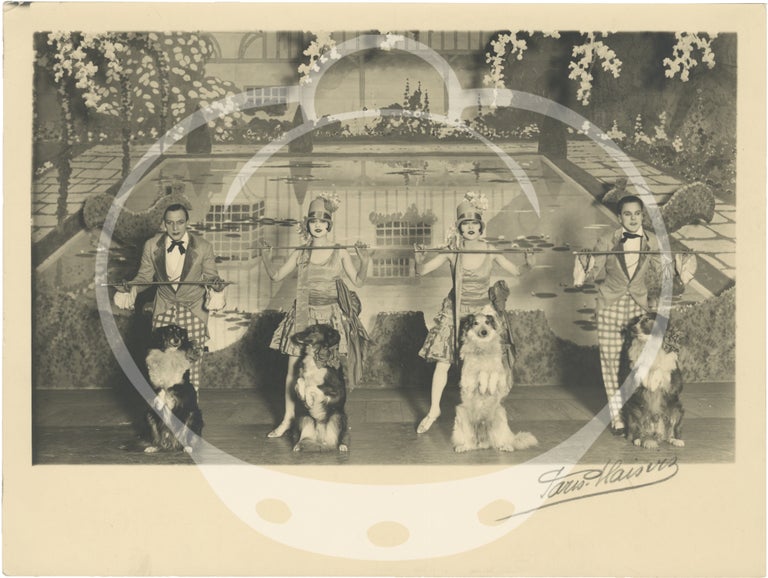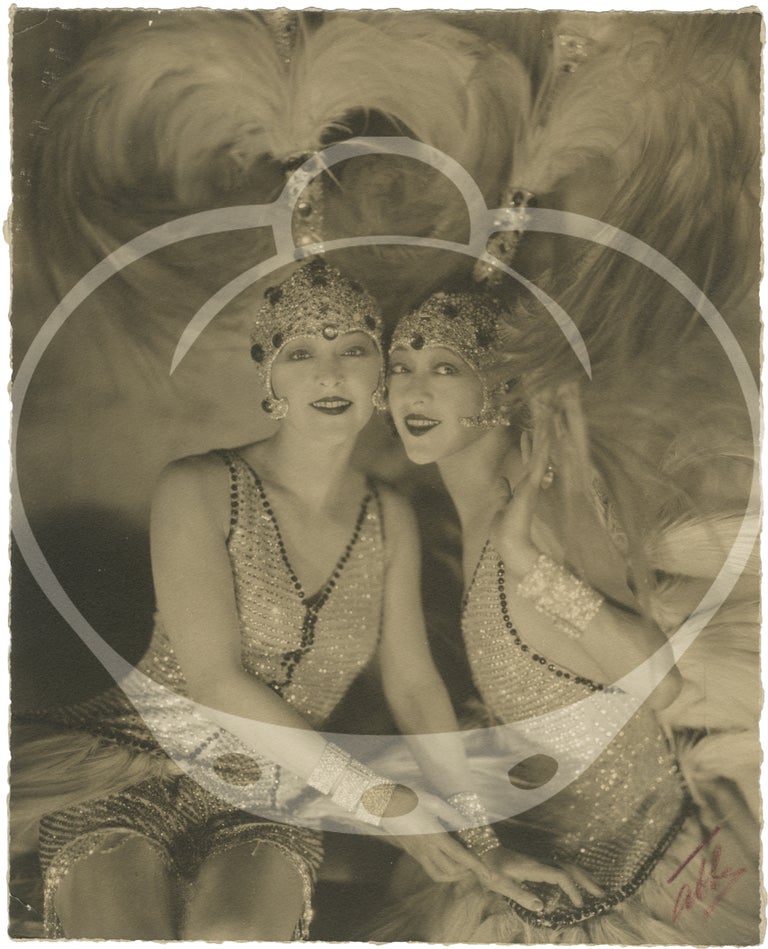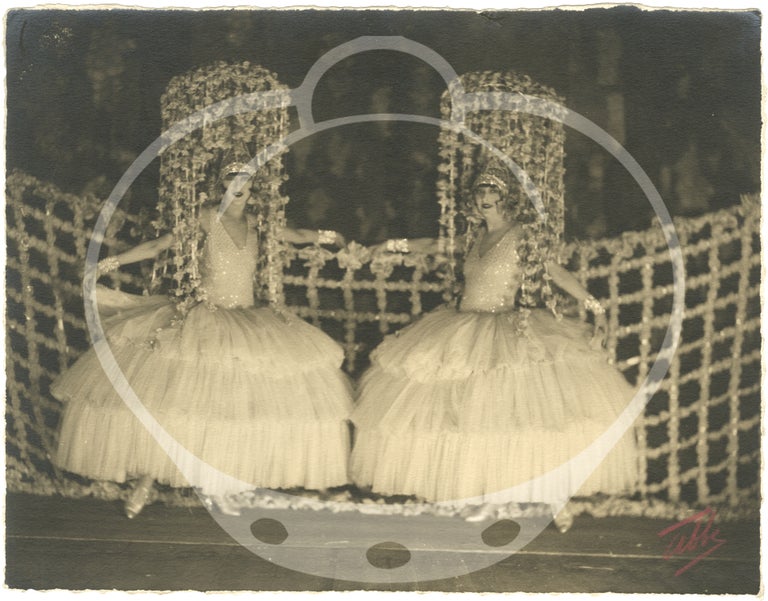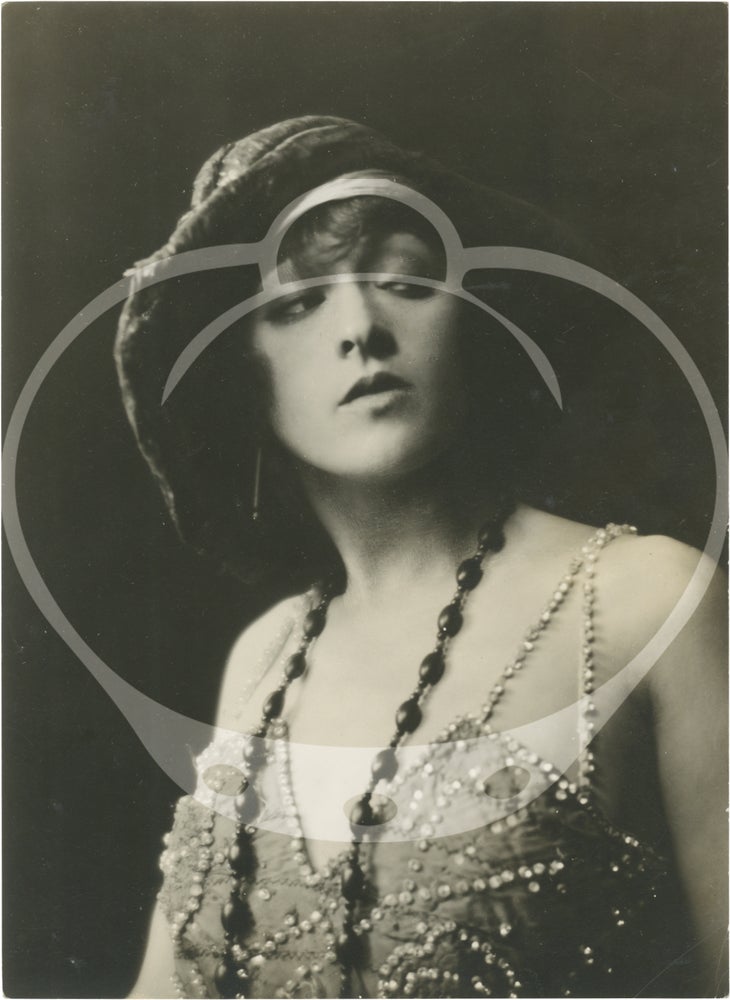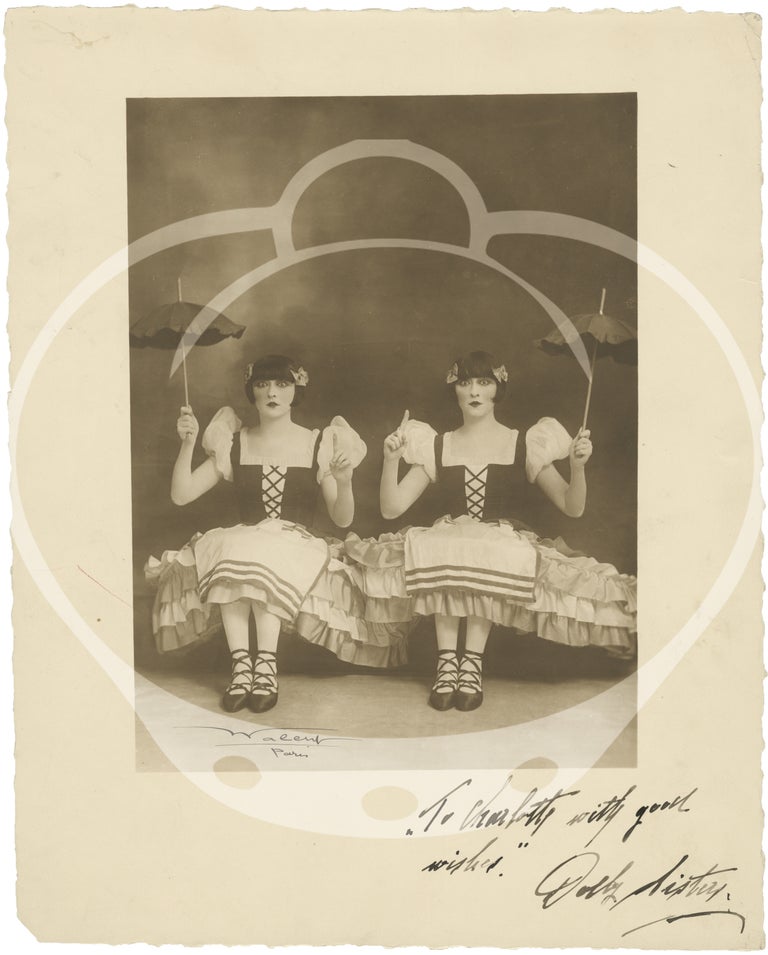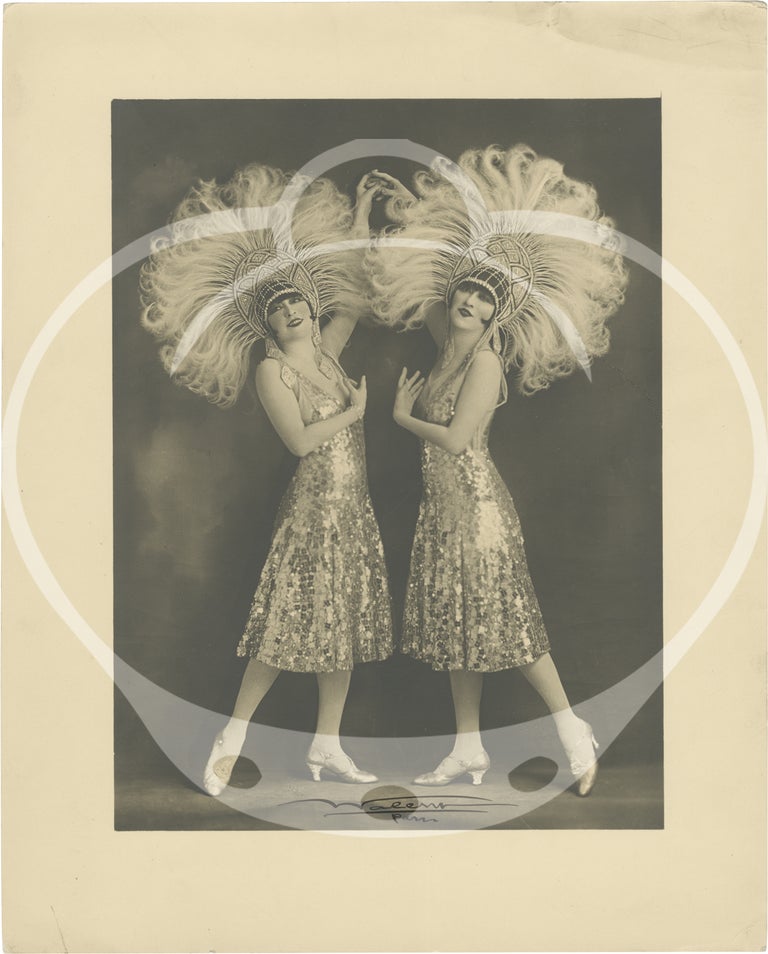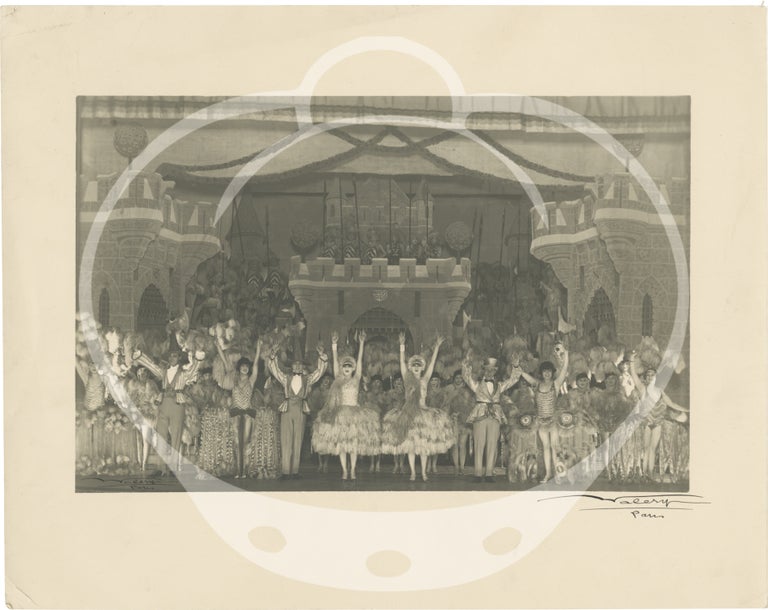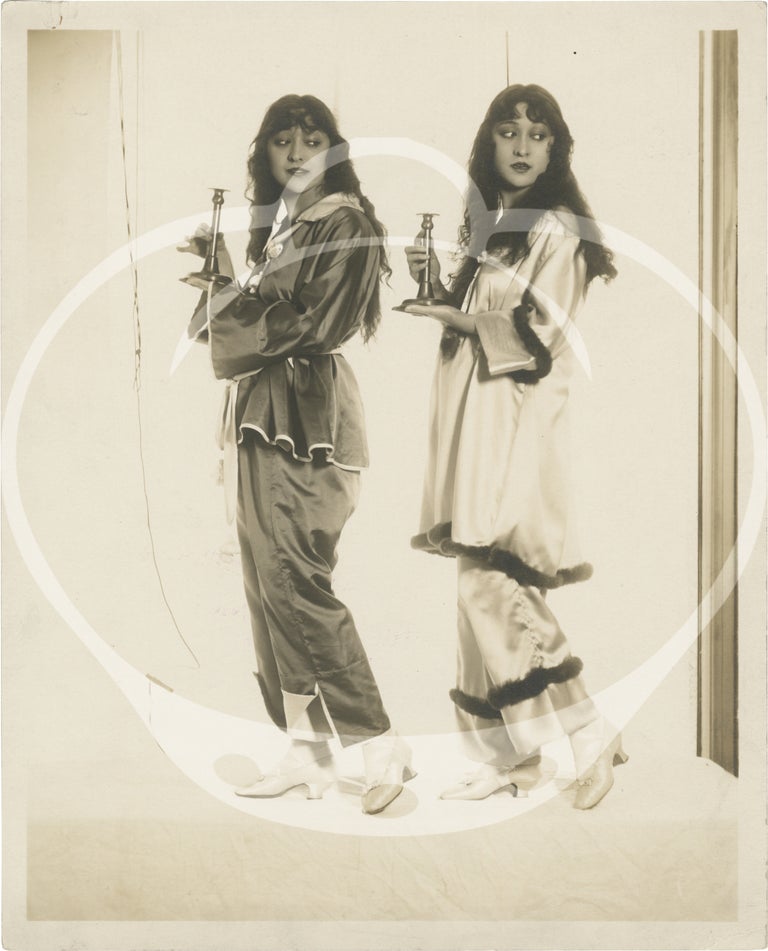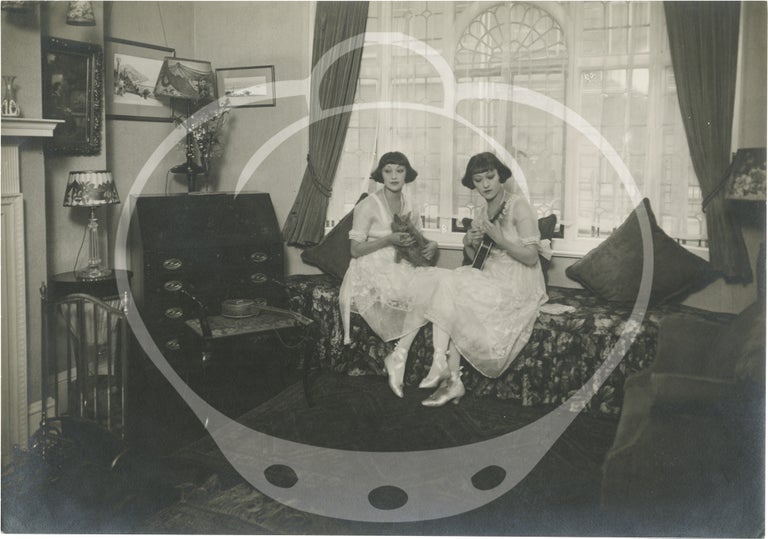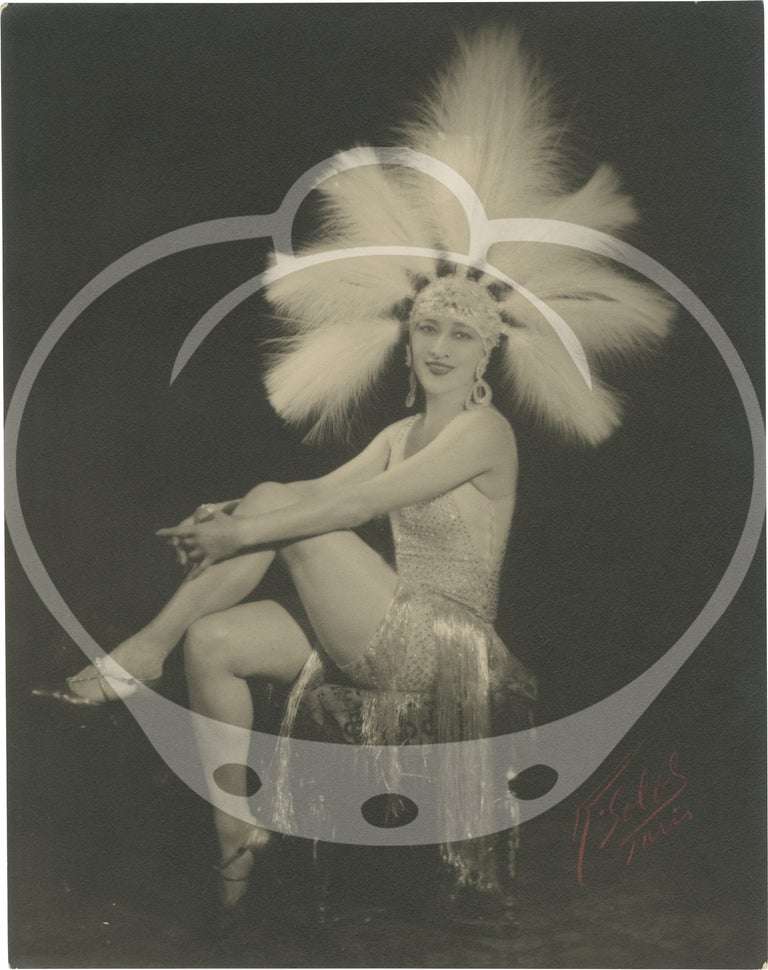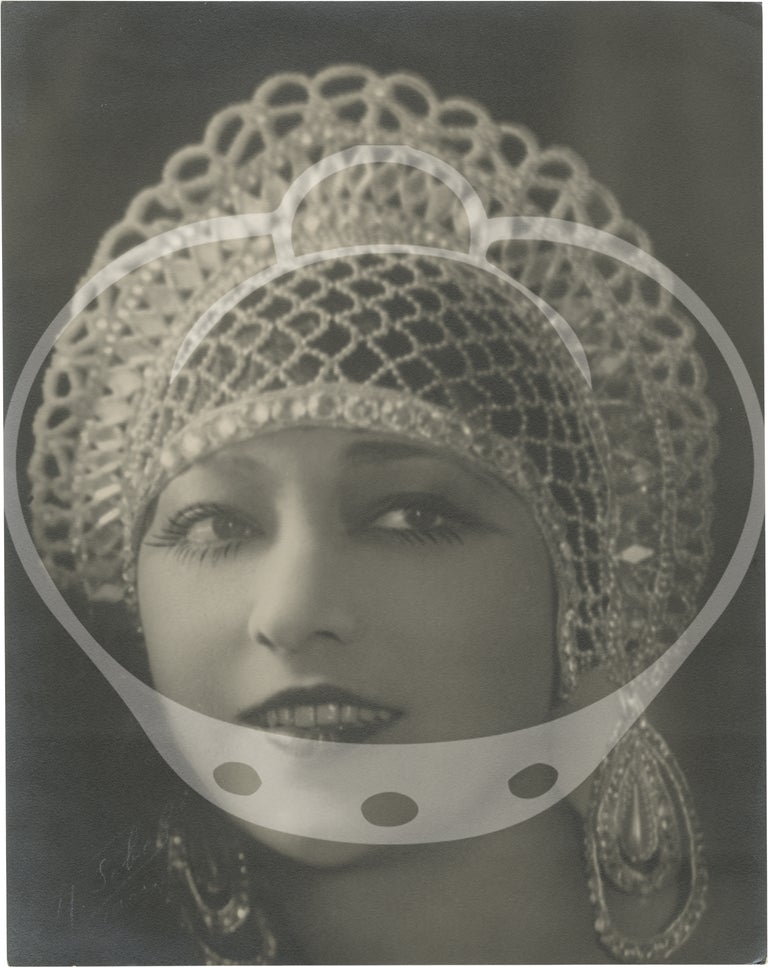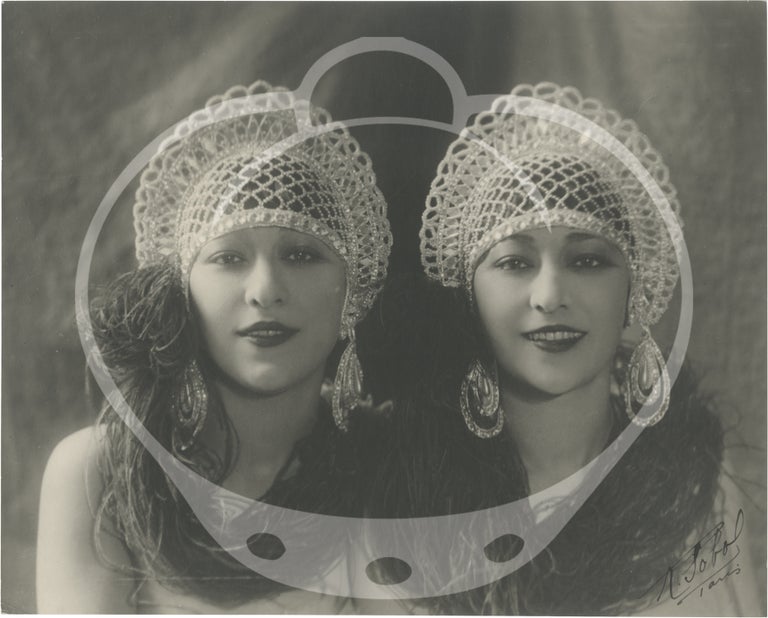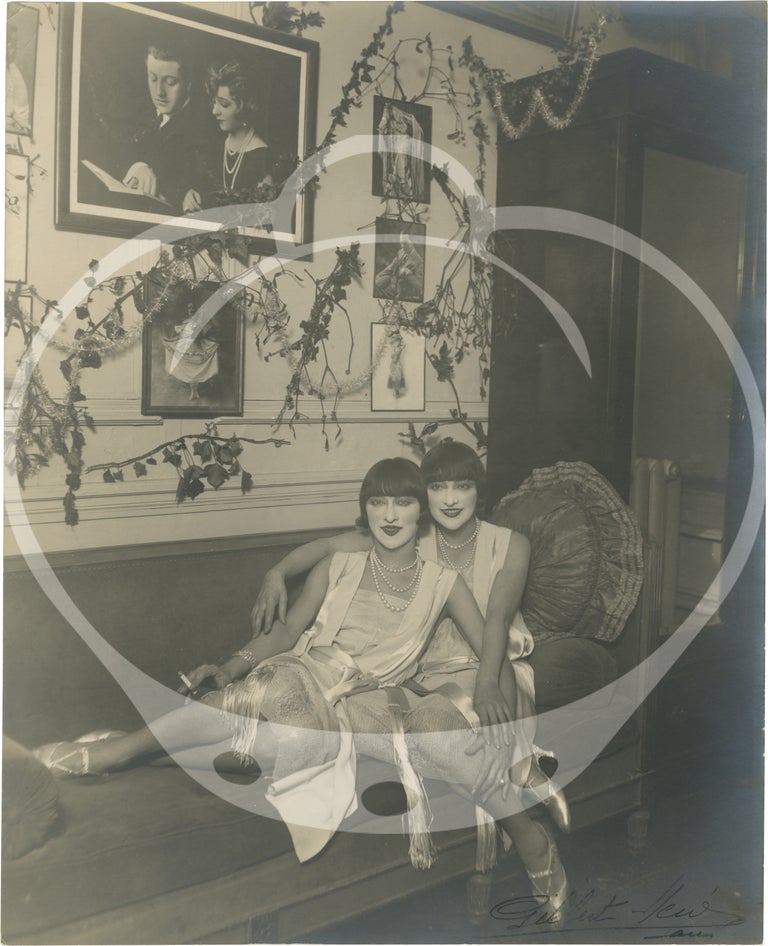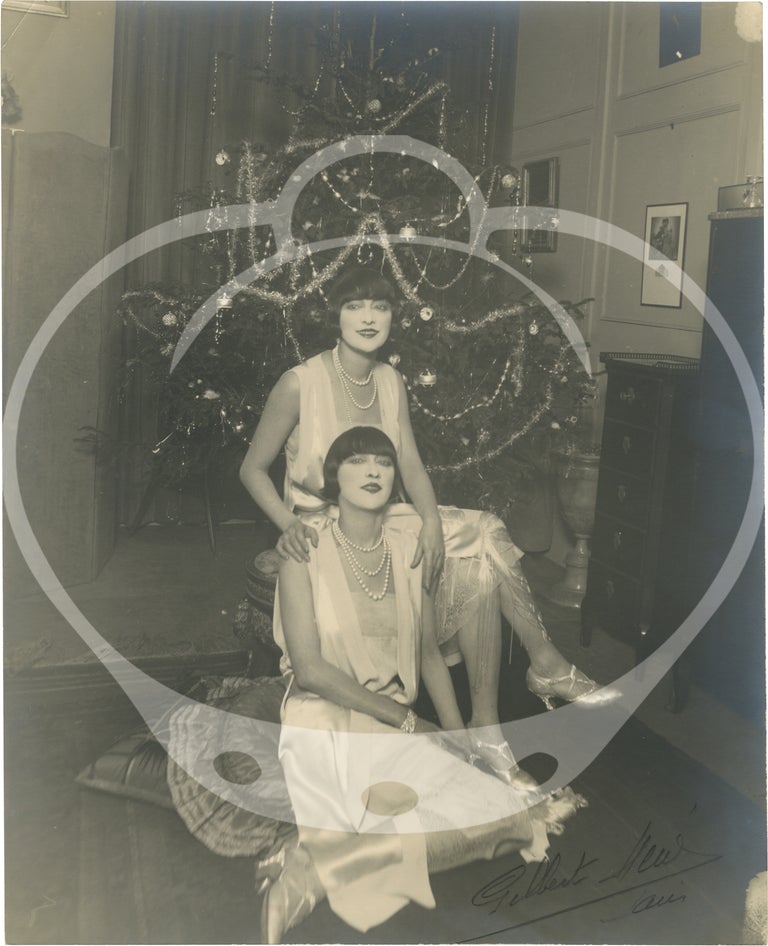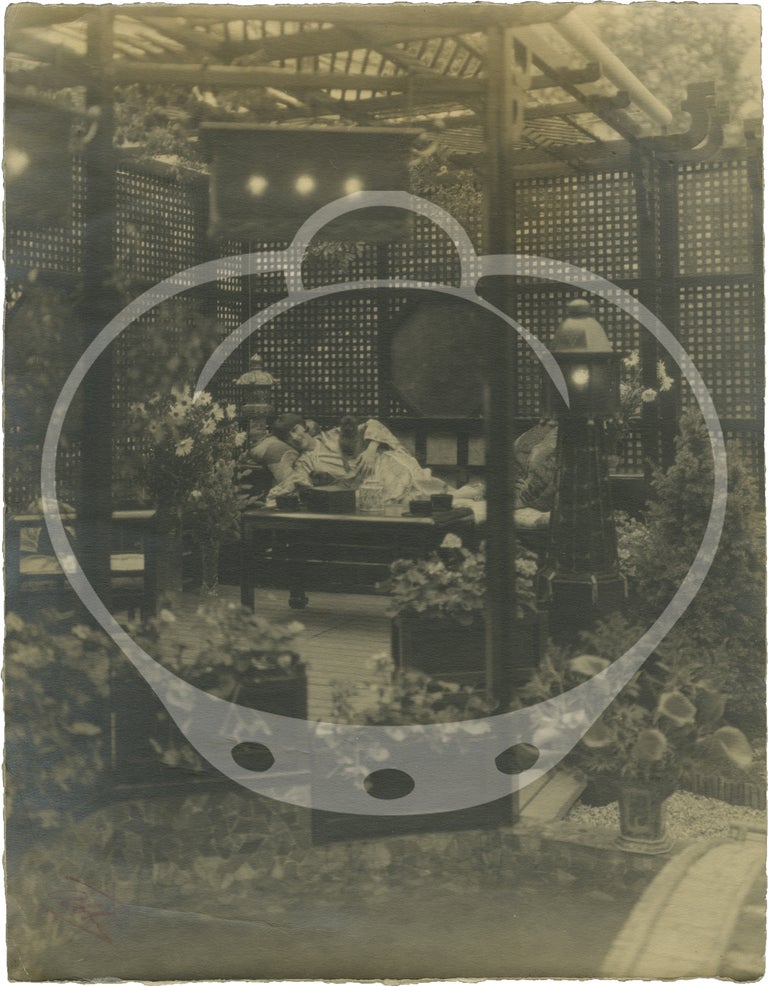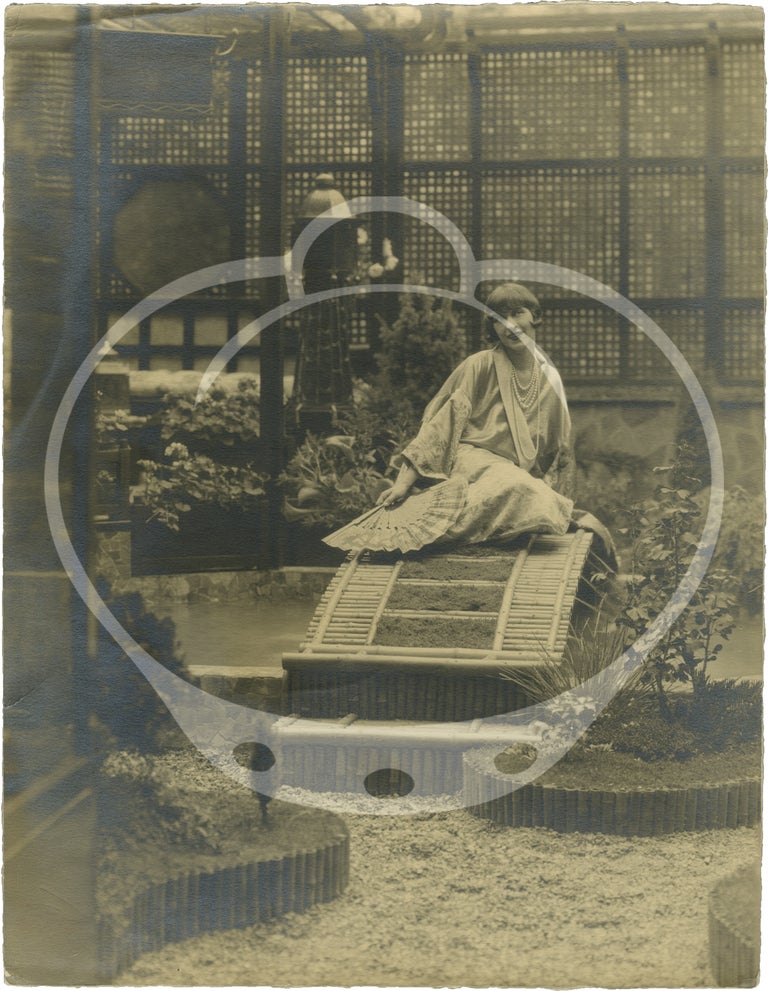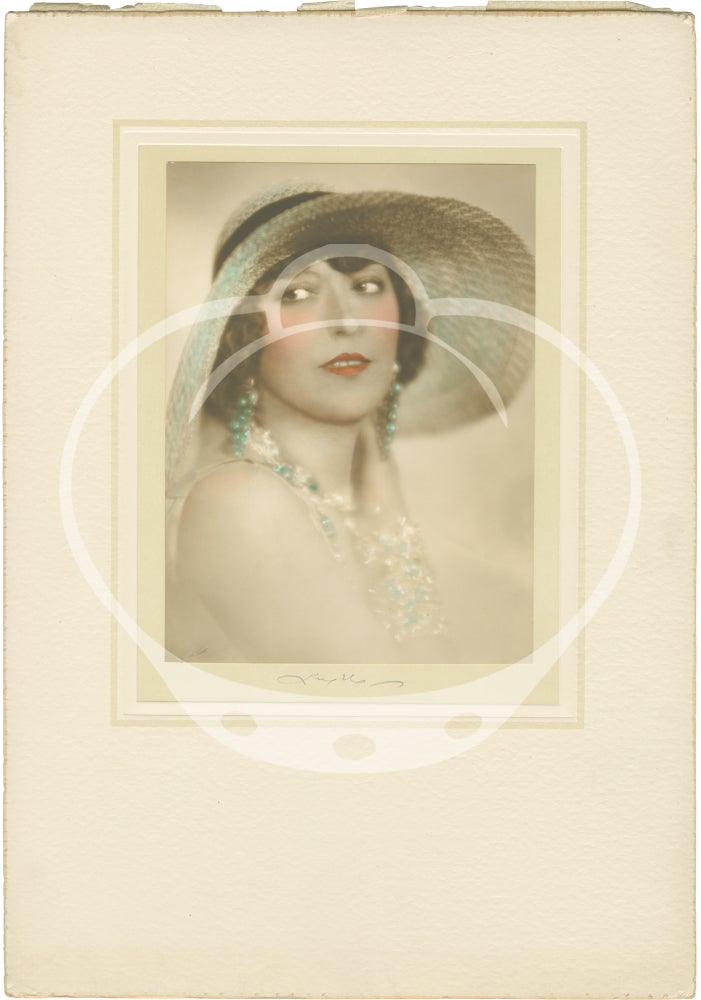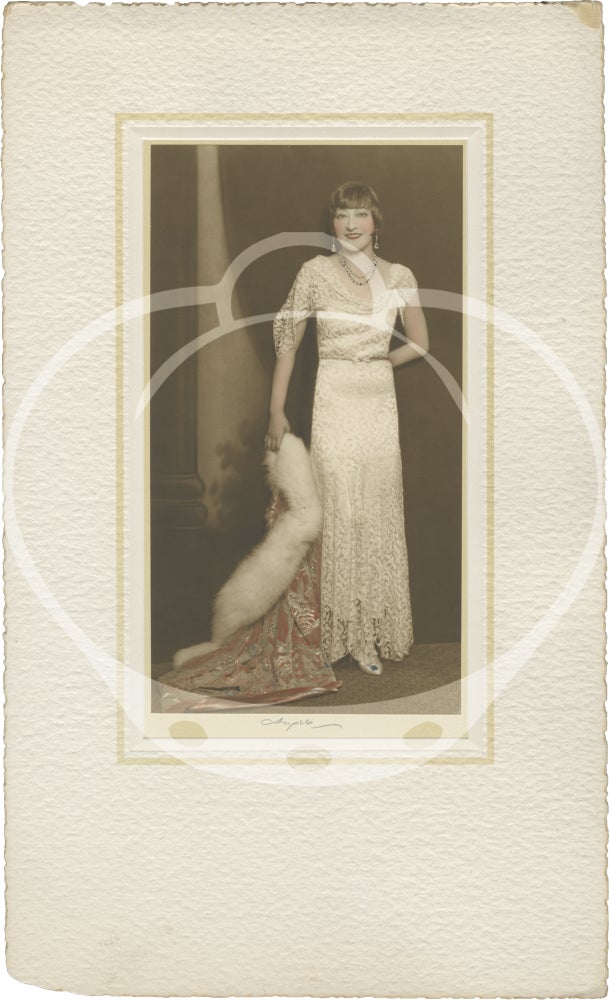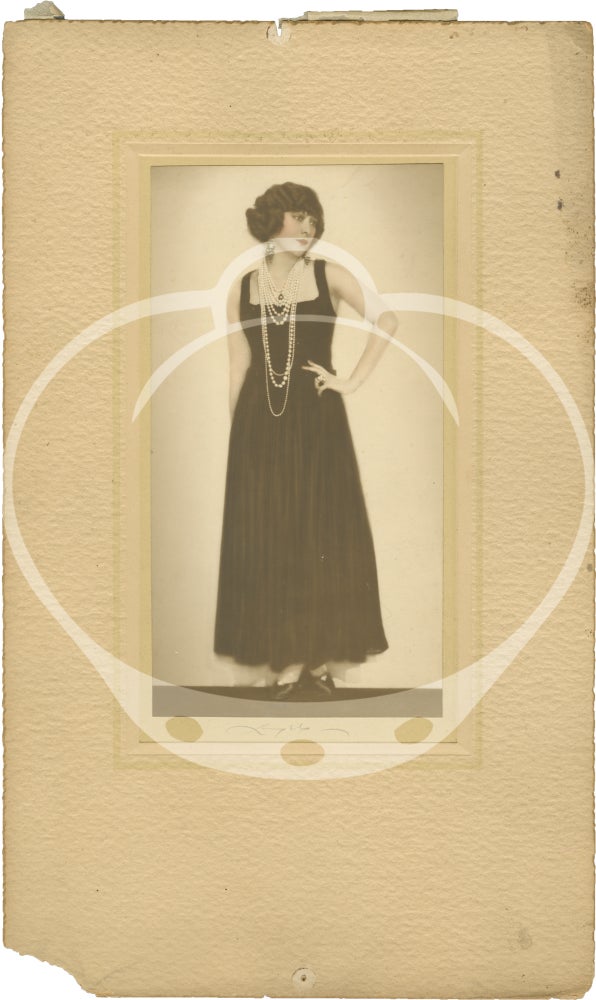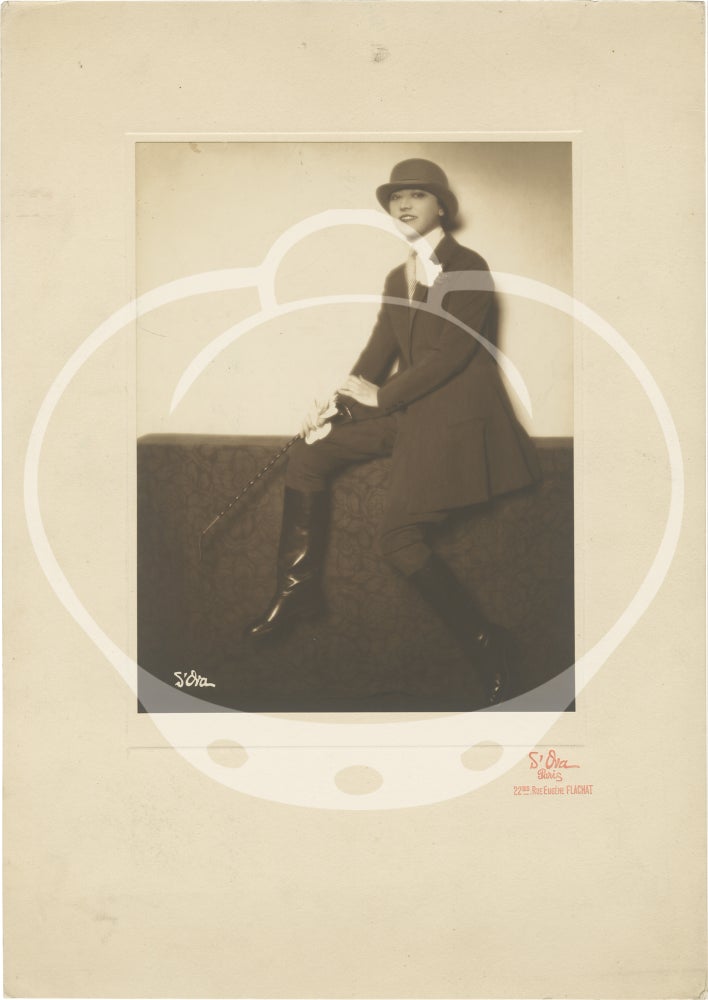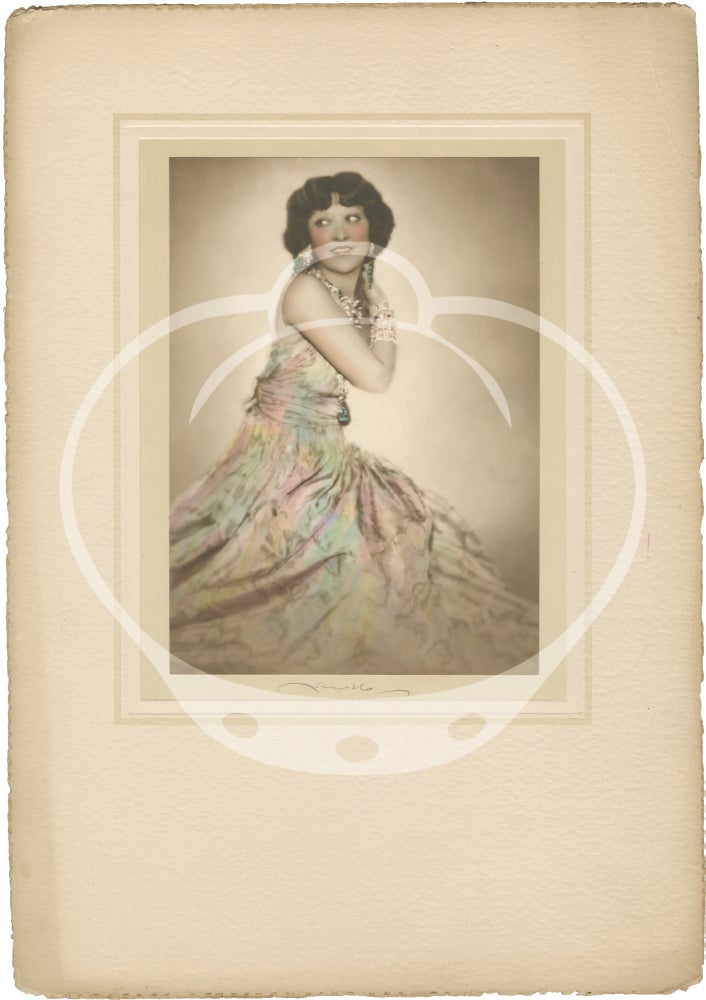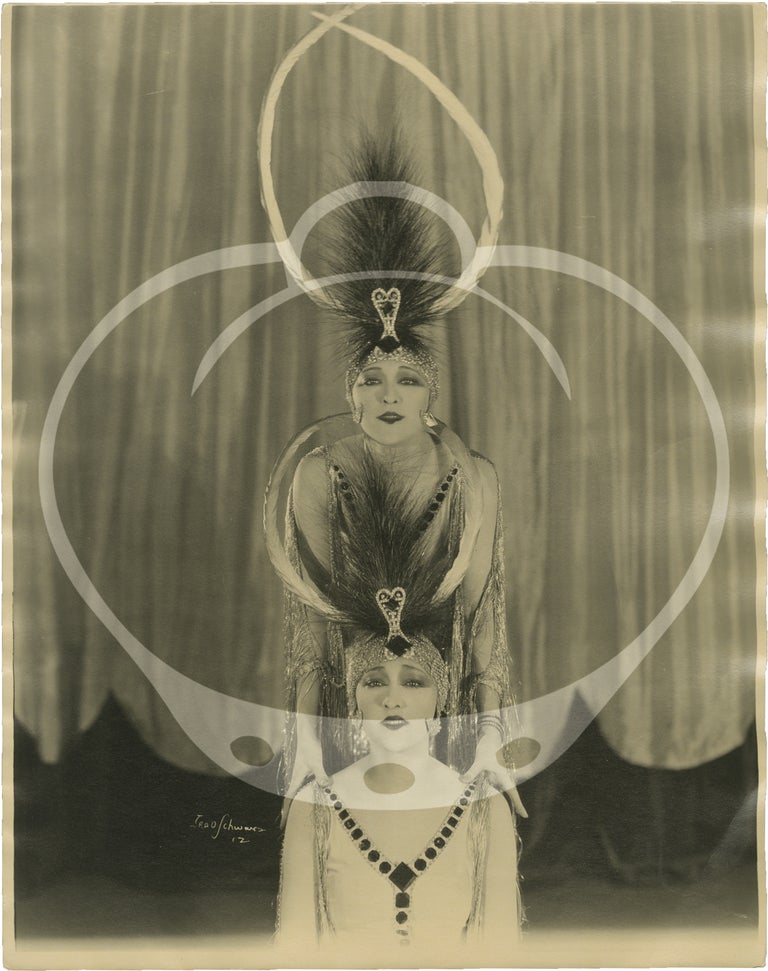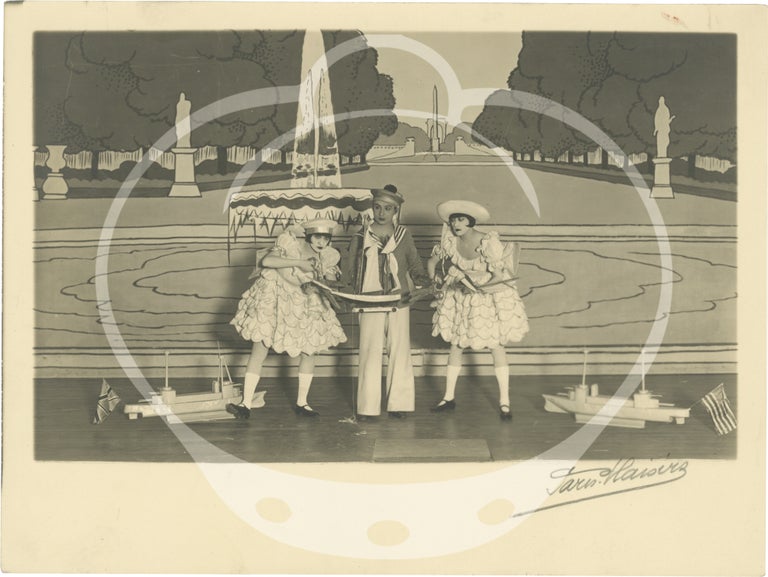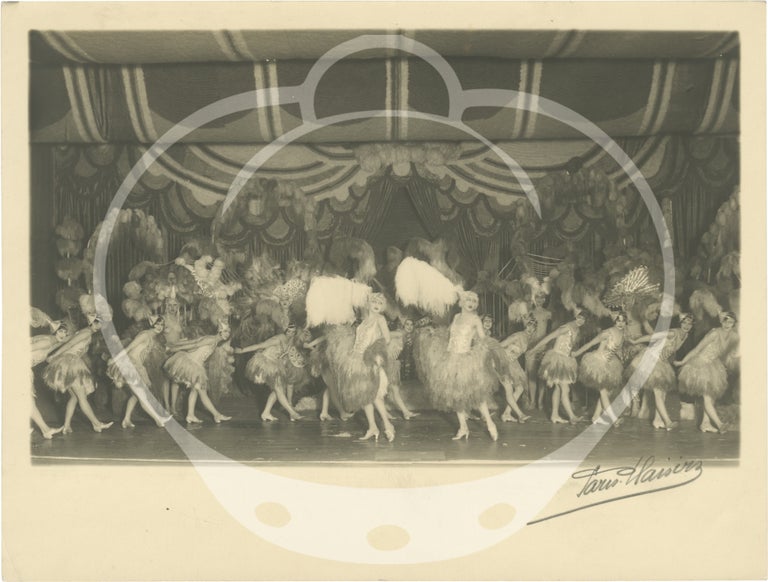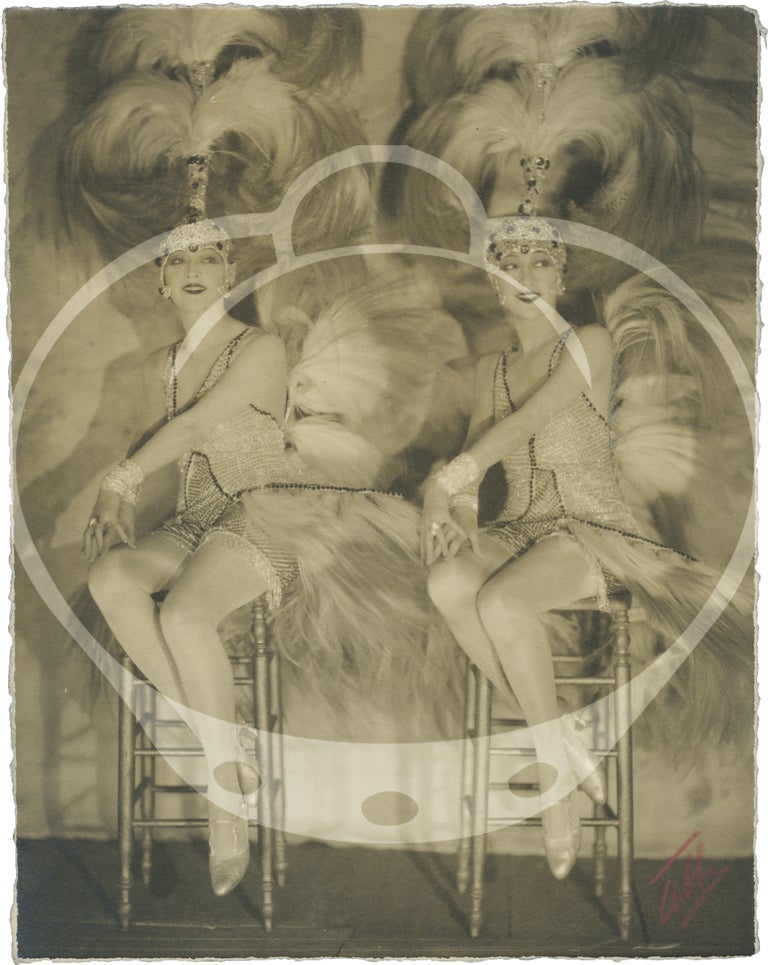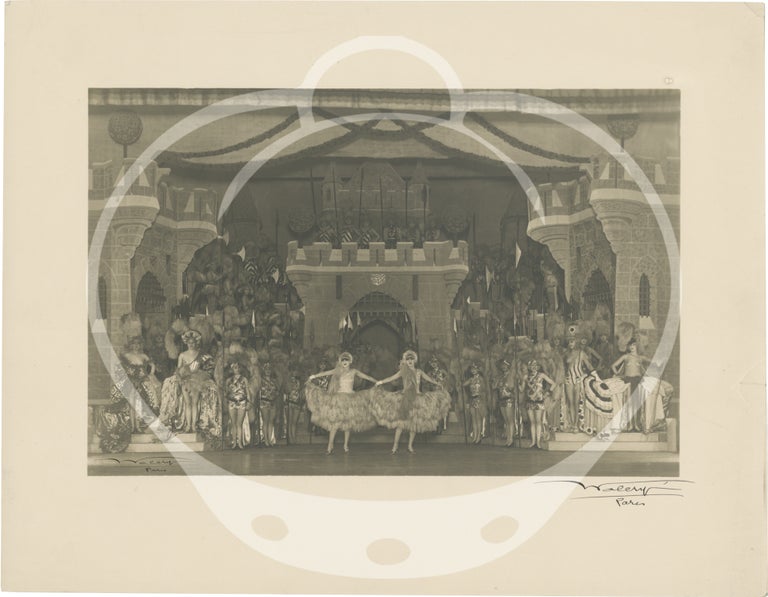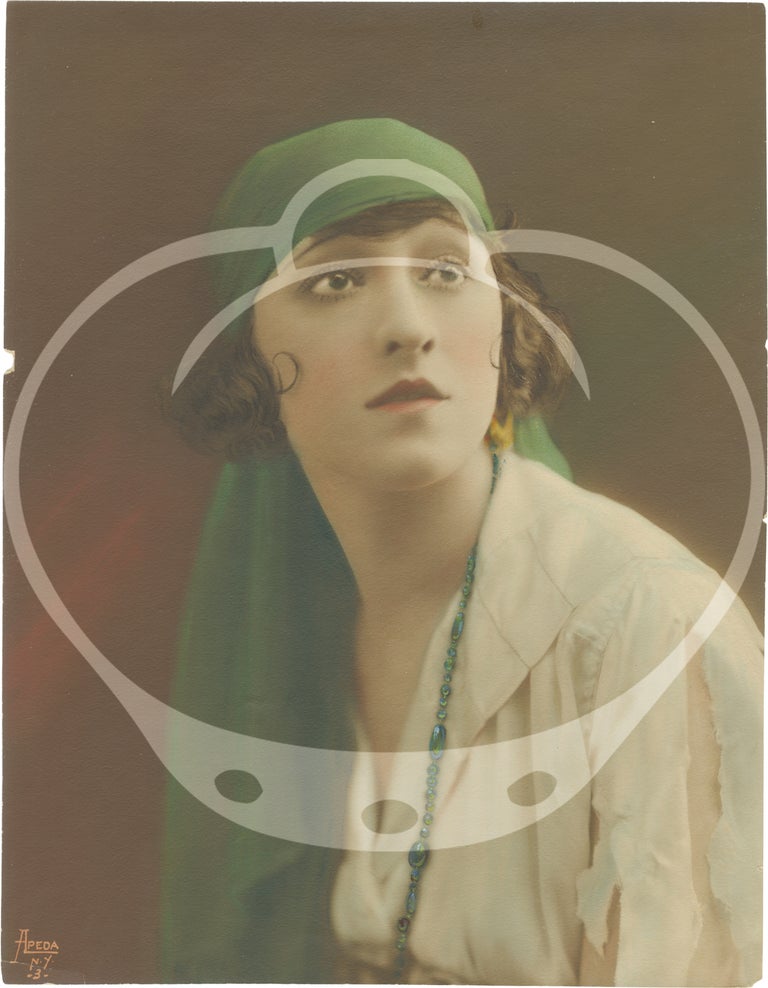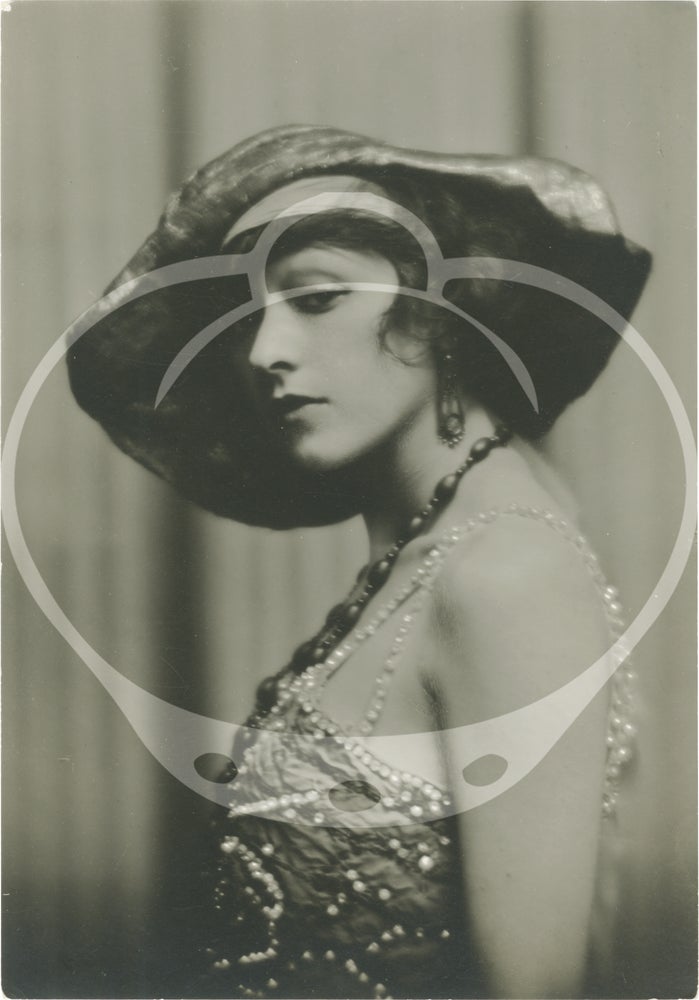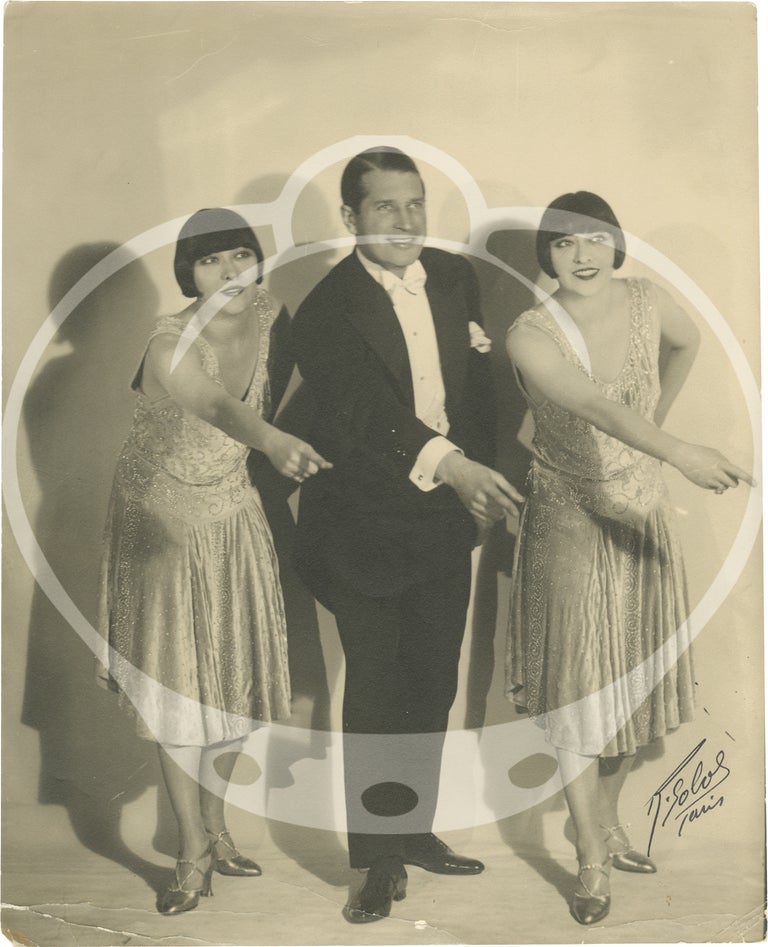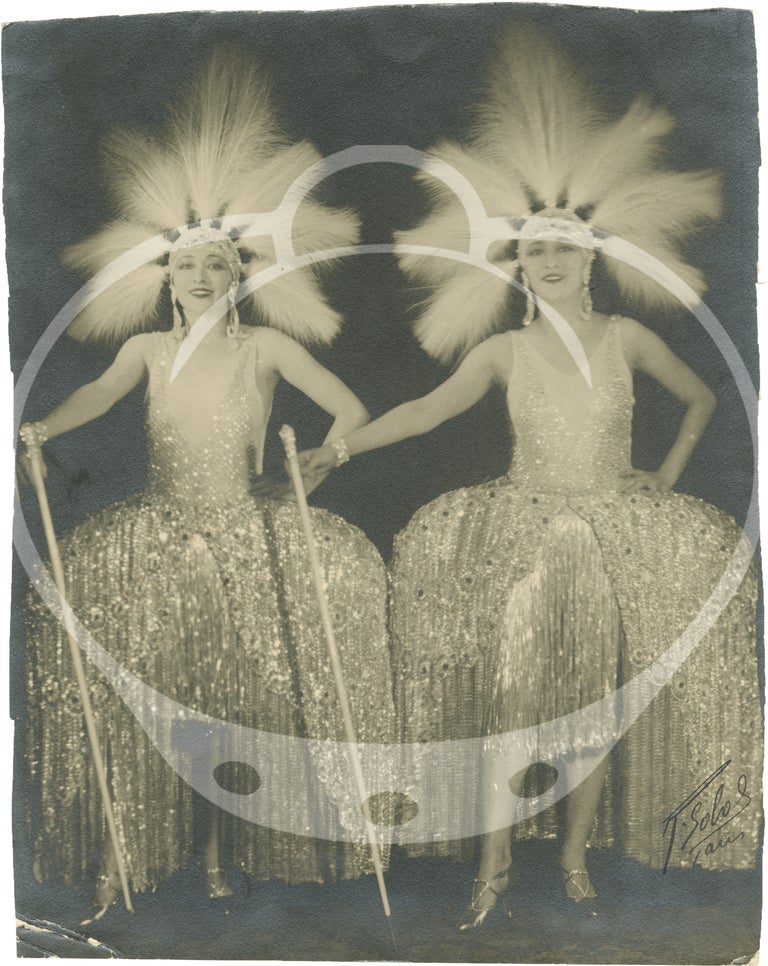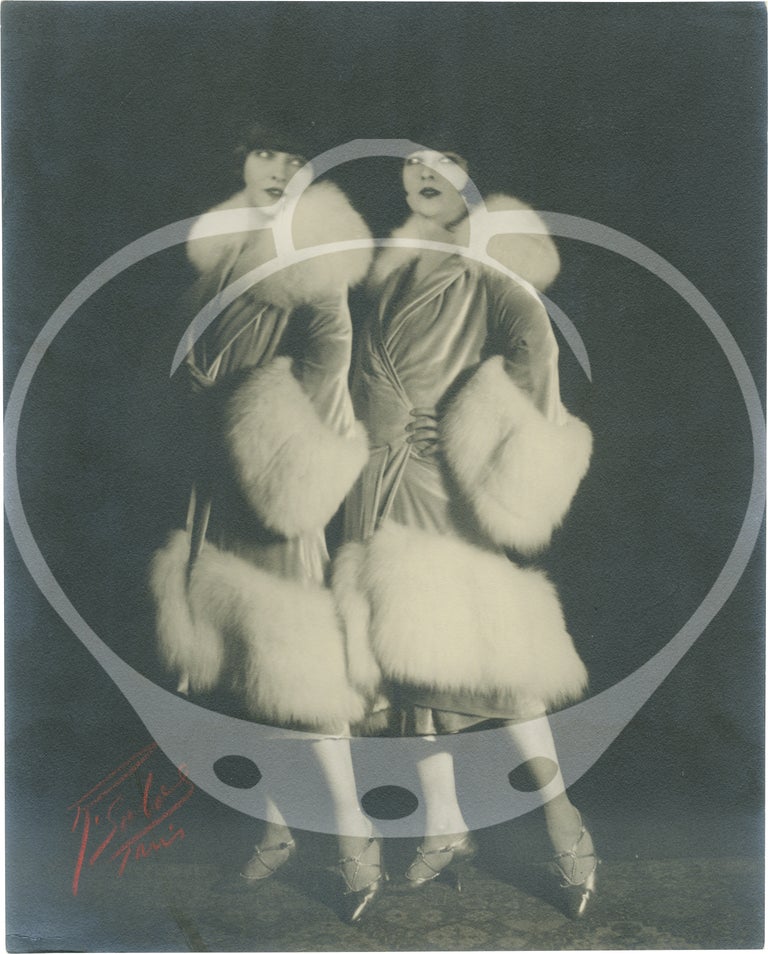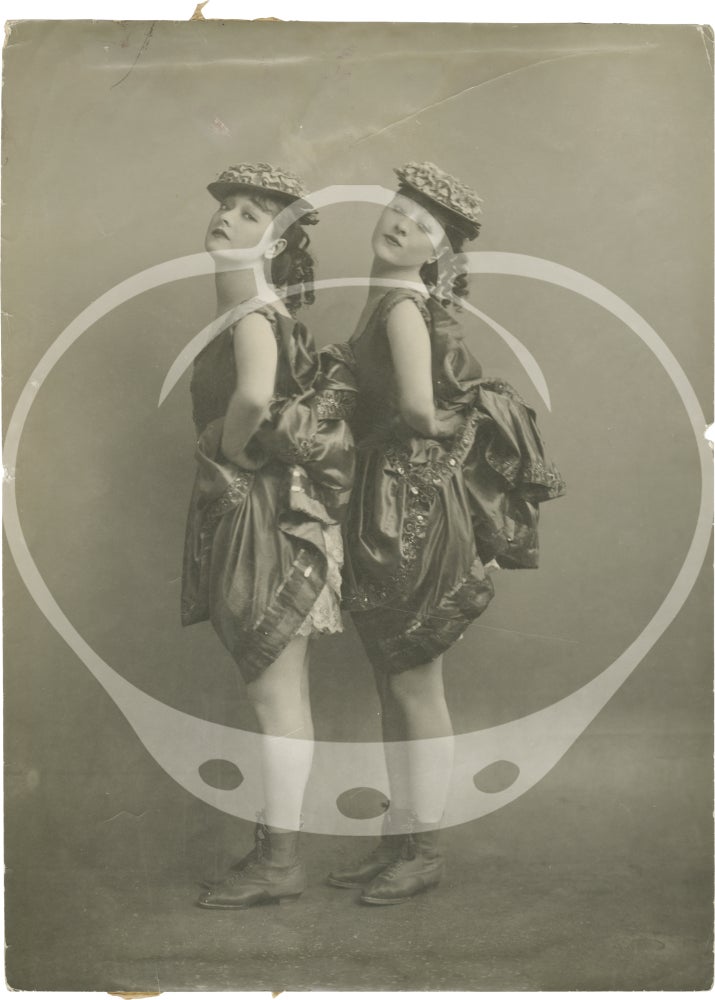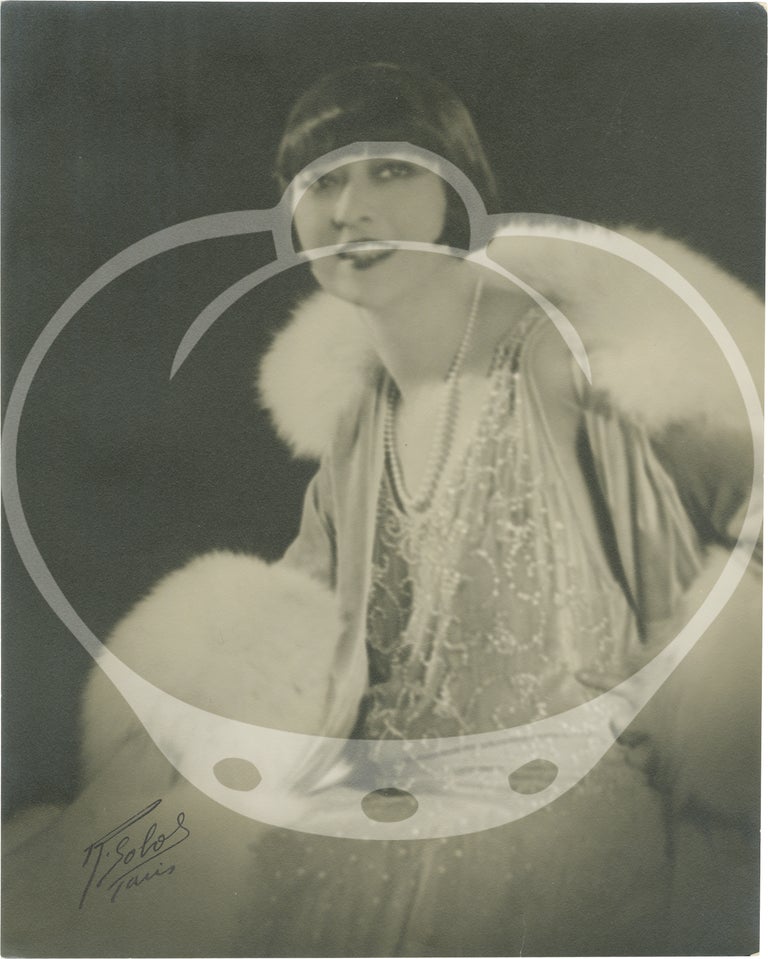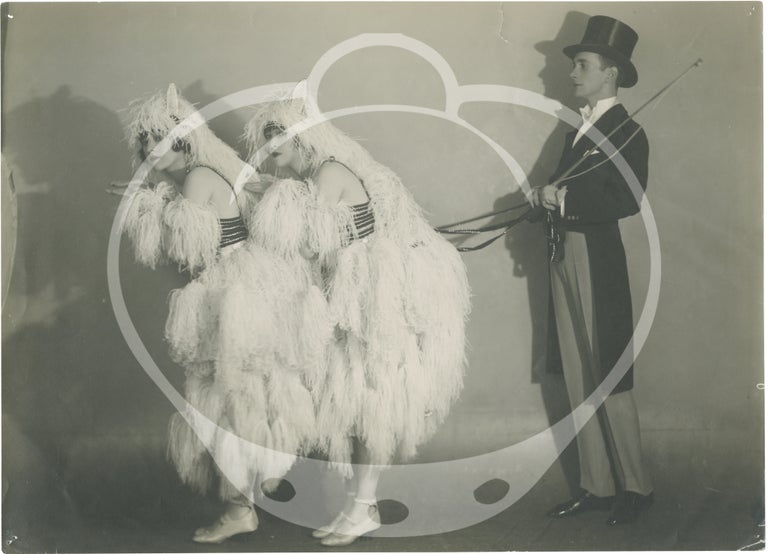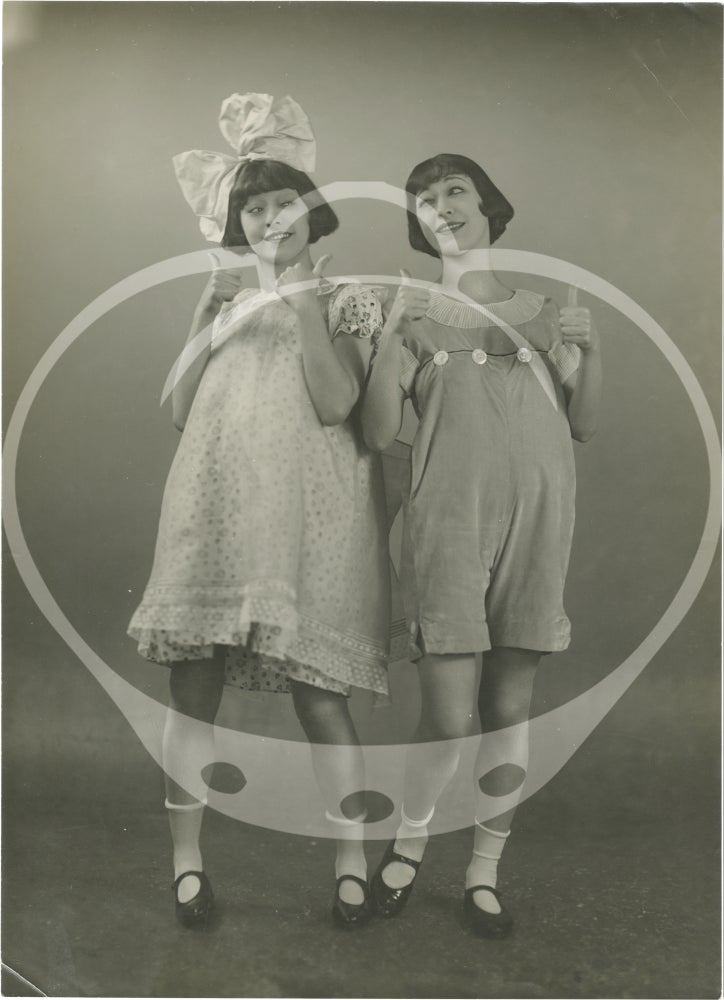Collected archives of 40 original photographs of The Dolly Sisters, circa 1910s-1920s
Paris: N.p., Circa 1910s and 1920s. Collected archives of 40 vintage photographs of notorious vaudeville performers Rosie and Jenny Dolly, known professionally as The Dolly Sisters, taken throughout the 1910s and 1920s. Consisting of ten small archives of photographs assiduously assembled over a period of time, with multiple photographers' stamps and signatures on the versos and rectos, respectively.
The collection represents a veritable who's who of portrait photographers of the early twentieth century, including Walery, Ruben Sobol, Apeda Studio, The Campbell Studio, Frank Foulsham and A.C. Banfield, Ira D. Schwarz, and James Abbe. Many have been SIGNED directly by the photographers in manuscript pencil on the rectos in addition to the photographer's stamp on the verso. Five photographs note the name of Paris Plaisirs, an early French music and dance magazine, on the bottom right corners of the rectos.
Especially notable in the collection is a photograph credited to Walery that has been INSCRIBED by the sisters on the bottom right corner of the recto: "To Charlotte with good wishes / Dolly Sisters."
The collection spans the 1910s and 1920s, the height of the sisters' popularity, with photographs of the pair in the studio, onstage, and at home, although the balance show the sisters performing, sporting a variety of outlandish, bedazzled costumes. One striking photograph, taken to promote the 1916 play "His Bridal Night," shows the sisters with long, dark hair, about four years before they got the bobbed haircuts for which they became known. The collection also includes several photographs of the sisters at home together, evidently taken around the holidays, sitting in front of the Christmas tree, applying makeup at a large vanity mirror, and relaxing with their pets.
Born in Hungary in 1892, twin sisters Jancsi and Roszika Deutsche moved to America with their family in the early 1900s. Urged on by their mother, a former dancer, the twins began their performing careers in Boston in 1906, at the age of 13, a performance that purportedly earned them the sobriquet "The Dollies," for their delicate features and perfectly matched proportions. The nickname stuck, and the pair would rise through the vaudeville and Broadway ranks as teenagers, eventually Americanizing their names to Jenny and Rosie. By 1911 the twins were star attractions in the Ziegfeld Follies, aided more by their vampish good looks, lively personalities, and glamorous personas than any uncommon theatrical talent.
The sisters would go on to make a fortune touring famed European dance halls and appeared in a few early silent films, but quickly realized that engaging the interests of wealthy, lovestruck benefactors was a far easier, and more rewarding, way to earn a living. Rosie and Jenny kept an awe-inspiring string of wealthy patrons in their back pockets, including Daily Express owner Max Beaverbrook, Diamond Jim Brady, William Randolph Hearst, and The Prince of Wales. In 1922 the sisters signed a six-week contract to appear at the Hotel Royal in Deauville, where their nightly scores at the casino tallied in the millions, launching an insatiable appetite for gambling. Their excursions to the casinos at Cannes and Deauville were legendary, largely funded by department store magnate Harry Selfridge.
As the Jazz Age progressed into the Great Depression, the sisters faced a slow decline in popularity, losing both lovers and husbands while their business ventures began to fail. In 1933, Jenny's face and body was mutilated in a car accident, after which she sold her vast jewel collection and burned through her fortunes in an attempt to repair her appearance through costly medical operations, ultimately committing suicide out of despair in 1941. Two years later Rosie made $52,500 by selling the rights to a film adaptation of their lives, starring Betty Grable and June Haver, but the film was a failure, and Rosie would attempt suicide in 1962, before dying in 1970 of heart failure.
An extraordinary collection, documenting the rise of two of the biggest stars of the early twentieth century, perhaps the earliest celebrities to be "famous only for being famous," seen through the eyes of some of the most important portrait photographers of the period.
Photographs ranging in size from 4.25 x 6 inches to 12 x 17 inches. Generally Near Fine, with occasional faint age toning and brief wear at the corners.
[Book #156585]
Price: $9,500.00
See all items in: Archives, Cabaret and Vaudeville, Dance, Musicians, Oversize photographs, Photographers, Photographs, Silent Film, Theatre
![[Book #156585] Collected archives of 40 original photographs of The Dolly Sisters, circa 1910s-1920s. The Dolly Sisters, Walery James Abbe, Foulsham, Ira D. Schwarz, Alfred Campbell, Ruben Sobol, Banfield, Jenny Dolly Rosie Dolly, photographers, subjects.](https://royalbooks.cdn.bibliopolis.com/pictures/156585_01.jpg?width=768&height=1000&fit=bounds&auto=webp&v=1706260817)
